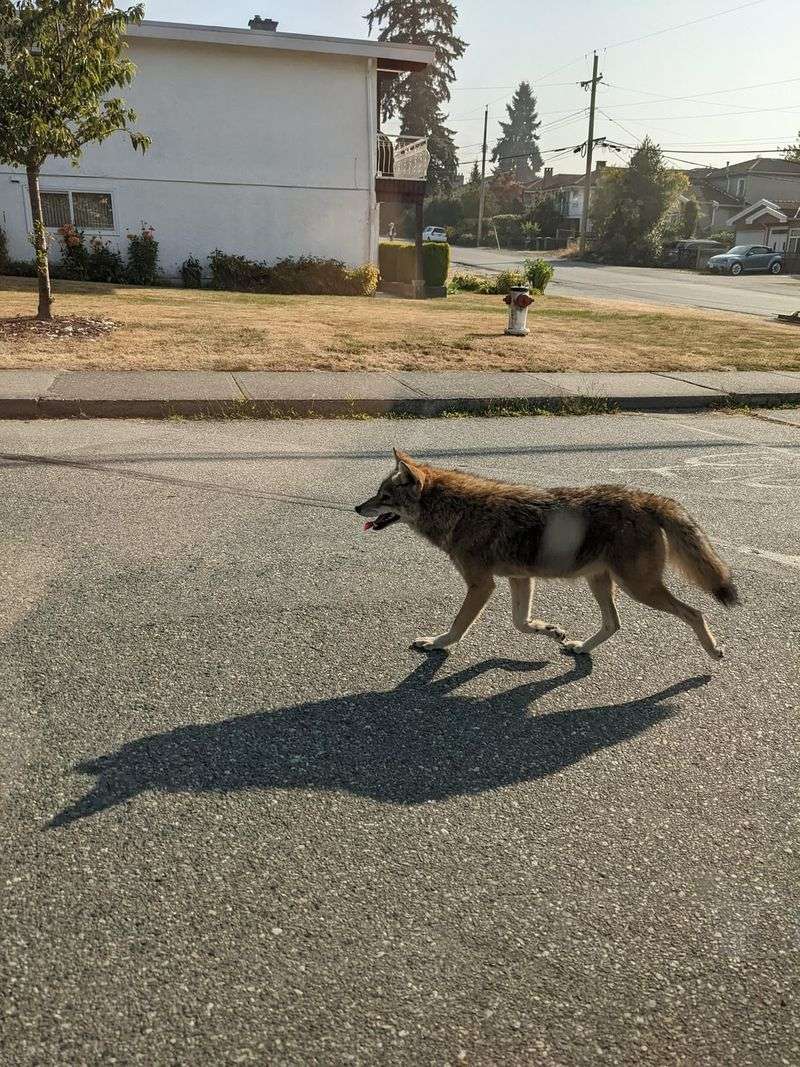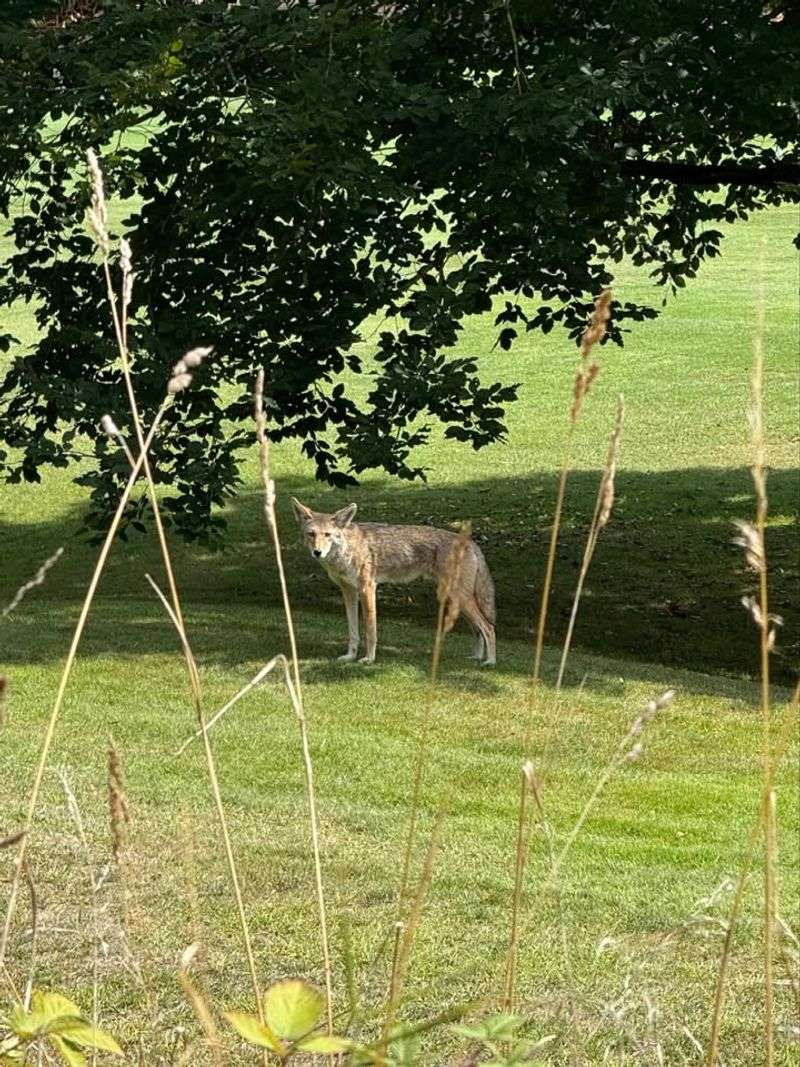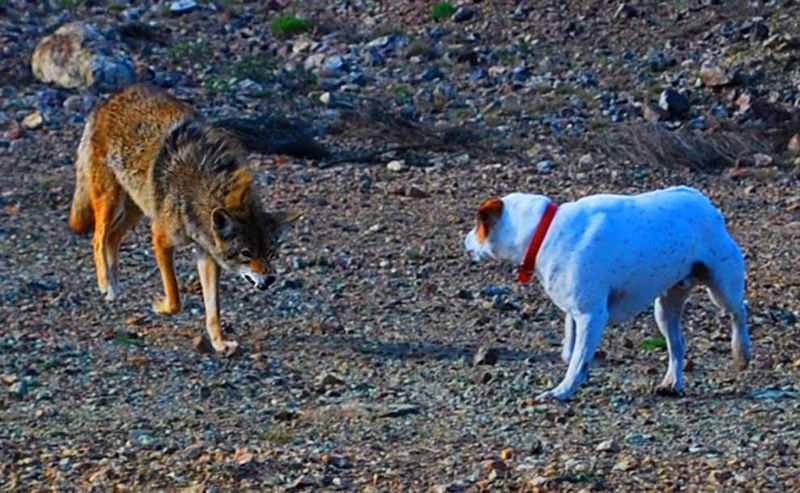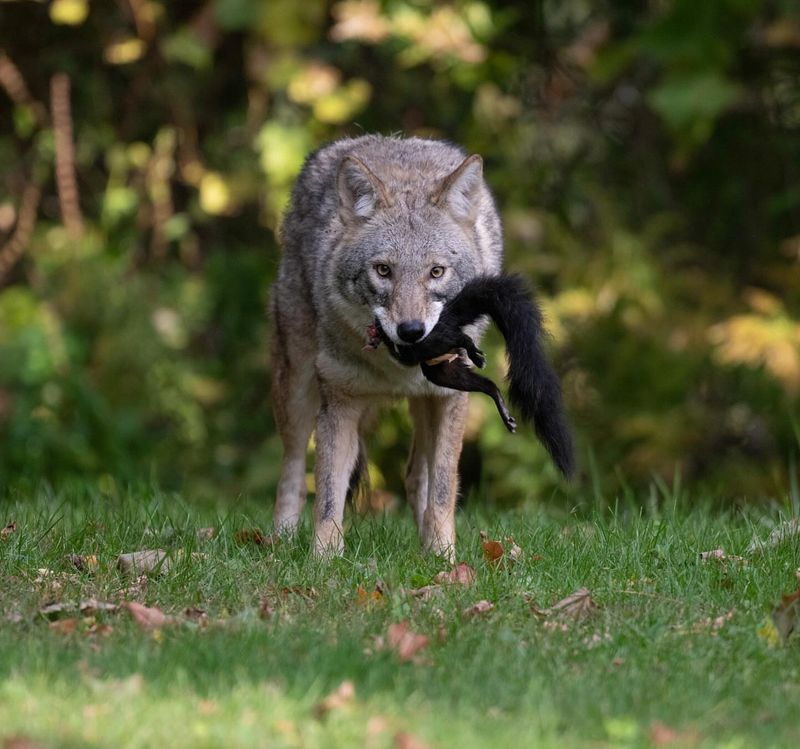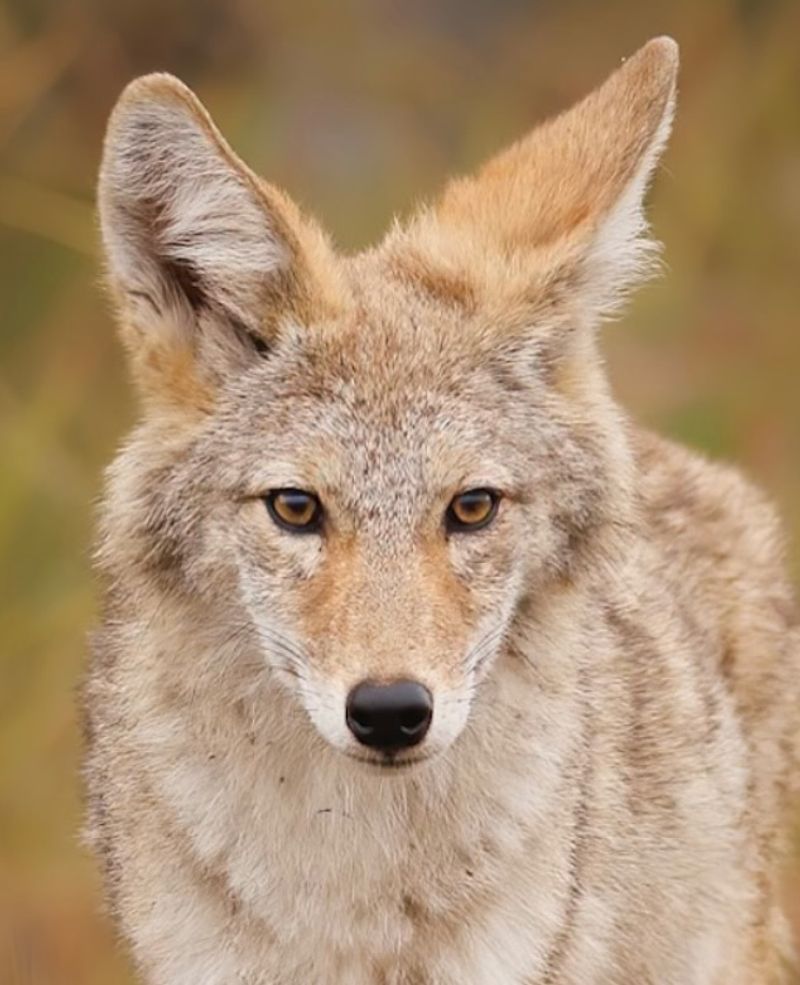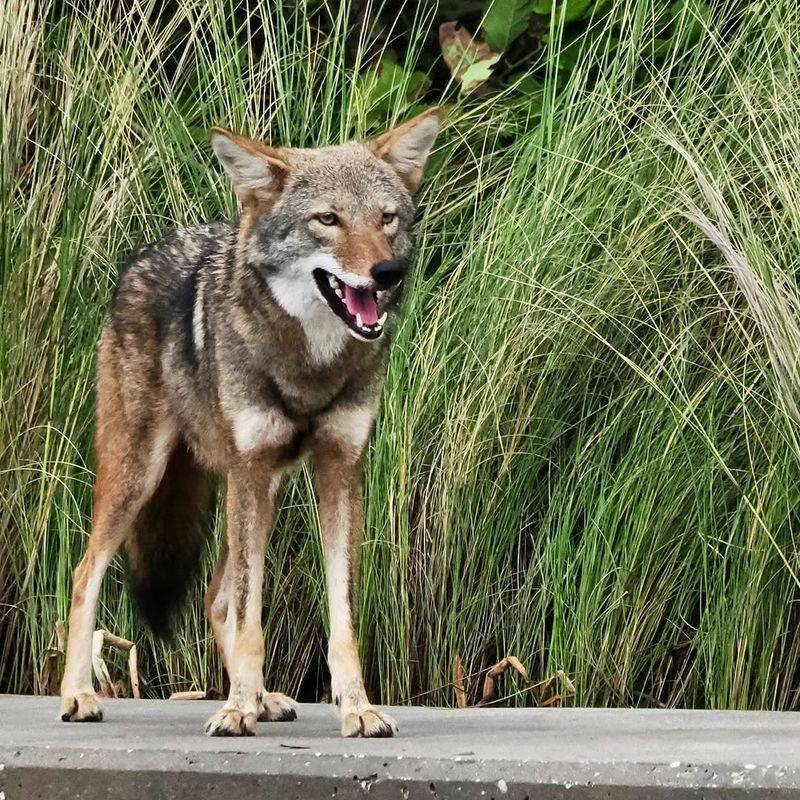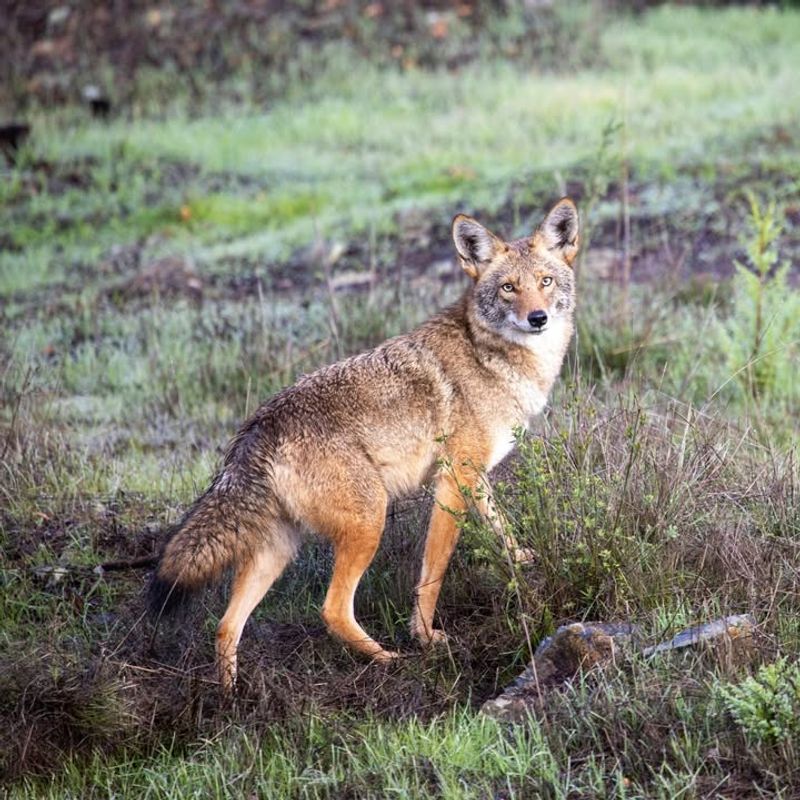Seeing a coyote in your Ohio backyard can be startling, especially if you have pets or children playing outside. These wild animals have become more common in neighborhoods across the state as they adapt to living near humans.
Knowing how to respond calmly and safely protects both your family and the wildlife that share our communities.
1. Make Yourself Look Bigger And Louder
When a coyote appears in your yard, standing tall with your arms stretched wide sends a clear message that you’re not prey. Wave your jacket or a towel overhead while shouting firmly to create an imposing presence.
Ohio wildlife experts recommend this technique because coyotes naturally avoid creatures that seem threatening or unpredictable. Making noise breaks their comfort zone and reminds them that humans aren’t easy targets.
This method works best when you act immediately rather than waiting to see what the animal does next.
2. Use Noisemakers To Startle The Animal
Keeping a noisemaker handy gives you instant power to disrupt a coyote’s confidence. Shake a can filled with coins, clang metal pots together, or blast an air horn to create jarring sounds that make the area unpleasant for wildlife.
Many Ohio homeowners keep these tools near their back doors for quick access during evening hours when coyotes are most active. The sudden racket triggers their instinct to flee from potential danger.
Consistent use teaches coyotes that your property isn’t a safe or quiet place to linger around.
3. Spray Water From Your Hose Or Sprinkler
A strong blast of water from your garden hose creates an uncomfortable experience that coyotes want to avoid in the future. Aim the stream directly at the animal while maintaining a safe distance from your porch or deck.
This gentle yet effective approach works particularly well in Ohio suburbs where neighbors live close together and loud noises might disturb people. Water doesn’t harm the coyote but teaches it that your yard brings unpleasant consequences.
Motion-activated sprinklers offer automatic protection when you’re not home to respond personally.
4. Secure Your Pets Indoors Immediately
Small dogs and cats look like natural prey to a hungry coyote, so bringing them inside removes the main attraction from your property. Never leave pets unattended in your yard during dawn or dusk when coyotes hunt most actively.
Ohio pet owners have reported incidents where curious coyotes approached unleashed animals, creating dangerous situations that escalate quickly. Supervision and immediate action keep your furry family members safe from wildlife encounters.
Consider installing a pet door that only opens with a special collar tag for added security.
5. Remove Food Sources That Attract Them
Coyotes visit yards that offer easy meals like unsecured trash cans, fallen fruit from trees, or pet food bowls left outside overnight. Cleaning up these temptations removes their reason for returning to your property.
Bird feeders scattered across Ohio lawns also attract rodents, which in turn draw hungry coyotes searching for prey. Store garbage in locked bins and pick up any food scraps after outdoor meals or barbecues.
A tidy yard sends the message that your space offers nothing worth investigating or remembering.
6. Install Motion-Activated Lights Around Your Property
Bright lights that suddenly flash on when detecting movement startle coyotes and make them feel exposed in areas they prefer to keep dark. Mount these fixtures near entry points like gates, sheds, and corners where wildlife typically travels.
Many Ohio homeowners find that combining lights with other deterrents creates layers of protection that work together throughout the night. Coyotes rely on shadows and darkness for hunting, so eliminating those advantages discourages them from lingering.
Solar-powered options provide eco-friendly solutions that require minimal maintenance or electrical work.
7. Keep Your Yard Well-Maintained And Clear
Overgrown bushes, woodpiles, and tall grass create perfect hiding spots where coyotes feel comfortable stalking or resting during daylight hours. Trim vegetation regularly and remove debris that offers shelter or concealment.
Open sightlines across your Ohio property make coyotes nervous because they have nowhere to hide from view or escape quickly if threatened. Clearing brush along fence lines eliminates travel corridors that wildlife use to move between neighborhoods.
A neat landscape looks inviting to humans but uninviting to animals seeking cover and safety.
8. Report Frequent Sightings To Ohio Wildlife Officials
Documenting repeated coyote visits helps wildlife managers track population movements and identify areas where animals have become too comfortable around humans. Contact the Ohio Division of Wildlife to share details about timing, behavior, and location of encounters.
Your reports contribute to community safety by alerting officials to potential problems before they escalate into dangerous situations. Wildlife experts can offer specific advice tailored to your neighborhood’s unique challenges and geography.
Keeping records with dates and photos provides valuable information that helps authorities make informed management decisions.
9. Never Approach Or Corner A Coyote
Getting too close to a coyote eliminates its escape routes and can trigger defensive aggression when the animal feels trapped. Always maintain at least 50 feet of distance and allow the coyote a clear path to leave your property.
Curiosity might tempt you to get a closer look or photograph, but Ohio wildlife experts warn that cornered animals behave unpredictably and dangerously. Backing away slowly while facing the coyote shows you’re leaving without appearing weak or vulnerable.
Respect their space just as you’d want them to respect yours around your home.
10. Never Feed Coyotes Or Leave Food Out
Feeding coyotes teaches them to associate humans with easy meals, which destroys their natural wariness and creates bold animals that demand food aggressively. Once they lose their fear, they become neighborhood problems that require professional intervention or removal.
Even well-meaning Ohio residents who think they’re helping wildlife actually endanger both animals and people by encouraging dangerous habituation. Coyotes that expect handouts may approach children or enter homes through open doors searching for snacks.
Wild animals thrive best when they hunt naturally and avoid human contact entirely.
11. Never Turn Your Back And Run Away
Running triggers a coyote’s chase instinct because fleeing creatures signal prey behavior that activates their hunting drive. Your sudden movement and speed communicate vulnerability rather than strength or confidence.
Ohio animal control officers emphasize that turning your back removes your ability to monitor the coyote’s actions and reactions. Instead, back away slowly while maintaining eye contact and continuing to appear large and assertive.
This controlled retreat lets you escape safely without accidentally inviting the animal to follow or pursue you further.


